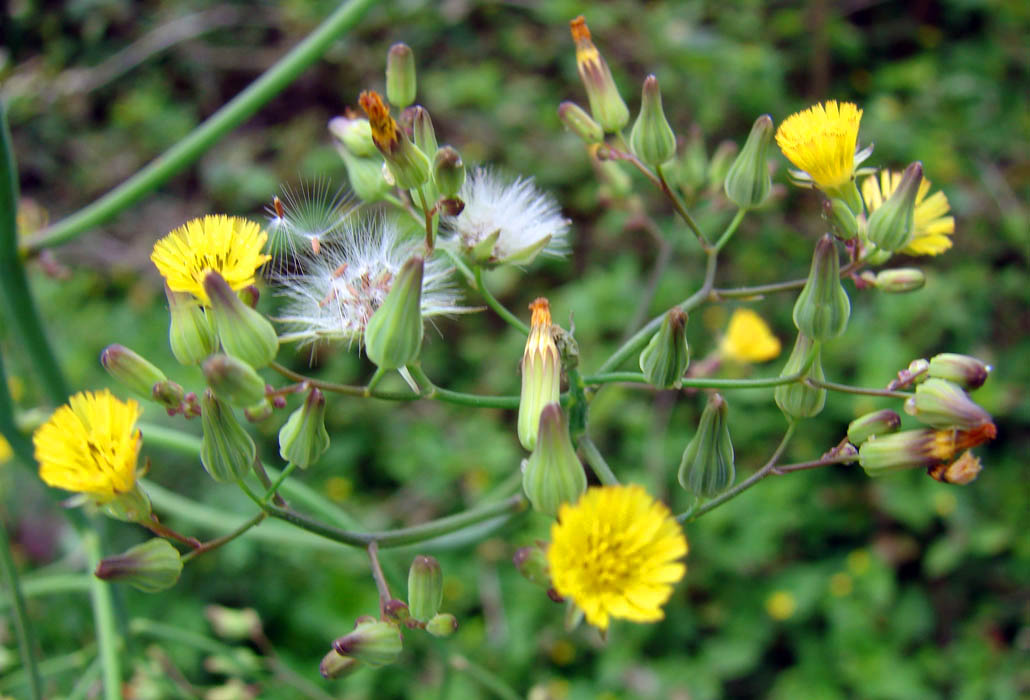Youngia japonica
March 2023
A single sunflower is actually made of many thousands of small flowers, forming a composite that is arranged to attract pollinators. Sunflowers are in the plant family Asteraceae, the largest flowering plant family, with about 24,000 different species. Like sunflowers, other plants in this family have composite floral heads composed of many tiny flowers with their own reproductive structure, often arranged in a way that gives the appearance of a single larger flower. Asteraceae includes many popular and beloved plants, including zinnias, cosmos, marigolds, asters, goldenrod, and coneflowers.
Of course, there are also some less desirable members of the Asteraceae family, including an invasive species that is relatively new to Rockbridge County: Youngia japonica, also known by the common name Oriental false hawksbeard. Youngia looks somewhat like a dandelion (another member of Asteraceae), but Youngia is a much more aggressive invasive plant, and one to look out for and to remove where possible.
Youngia plants start as a rosette with hairy leaves, and a milky sap is emitted when leaves are torn. In contrast to dandelion, Youngia plants have leaves on the flowering stem as they grow, and plants can become highly branched. The flower stalk is usually leafless, branched at the top, and typically 6 to 15 inches tall. The flowers are yellow and dandelion-like, but only about ½ an inch in diameter. The seed heads are also dandelion-like, and the seeds are wind dispersed. Youngia has a taproot, and if you see these, it’s best to dig them up to prevent them from spreading.
We first spotted Youngia at Boxerwood in 2019 thanks to a very knowledgeable and observant Master Gardener (and this was the first place it was officially documented in Rockbridge County). We’ve been managing it by digging up plants in the early spring, before they go to seed. However, Youngia is prolific and that is a huge task; we can’t get all of them! We have also tried repeated cutting (with a weed eater) to keep them from going to seed, which is less labor intensive but also less effective.
Although Youngia is an aggressive invasive species, the leaves are edible when they are young (much like dandelions), and the plant is known to have some medicinal properties. We are unlikely to ever be rid of Youngia altogether, so we take solace in the fact that it can be delicious and healthful!




